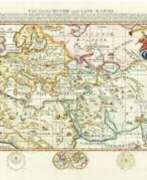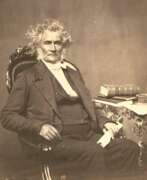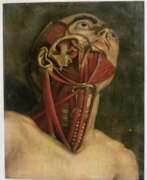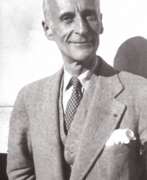Publishers


Rudolph Ackermann the Elder was a German and British inventor and publisher, founder of Ackermann & Co.
He was the son of a master saddler, learned the craft and in time achieved a high art in carriage making, designing carriages and coaches. In 1794 Ackermann opened a printing and picture store in London, which quickly became popular. The following year he opened a printing shop at 96 Strand - thus began the printing business of the Ackermann dynasty, which lasted for over two hundred years.
Between 1808 and 1810. Ackermann published the first of his sumptuous plate books, The Microcosm of London, with beautiful hand-colored aquatints. This work established his reputation as a book publisher, and he subsequently published many more elaborate illustrated books. Ackermann also gained widespread fame for the periodical he founded in 1809, the Repository of Art, Literature, Commerce, Manufactures, Fashion, and Politics. This popular journal, published monthly until 1828, contained articles and illustrations of various kinds, especially on fashion, social and literary news.
Ackermann's business flourished, and by the end of 1820 he had established offices in Central and South America. Continuators of the Ackermann dynasty were in the printing business until the end of the twentieth centur


Platon Petrovich Beketov (Russian: Платон Петрович Бекетов) was a Russian publisher, book printer, historian and collector.
Platon Beketov was born into an old Russian landowning family, from 1798 he lived in Moscow, where he became interested in collecting and in 1801 opened his own printing house, which was considered one of the best in Moscow. Beketov raised the national printing industry to a worthy level. His books were made with great artistic taste and elegance, more than a hundred beautiful editions in all. A number of editions of Russian authors were printed here, among them Vasily Andreyevich Zhukovsky, Alexander Nikolayevich Radishchev, Mikhail Matveyevich Kheraskov and others. The printing house also printed the magazines "Friend of Enlightenment" (1805) and "Inventory of Books Printed at the Dependence of Platon Beketov's Printing House" (1806).
Beketov was passionate about old manuscripts, especially with portrait miniatures and autographs, and portraits of famous contemporaries. He collected an entire picture gallery, which formed the basis of two of his major projects - the publication "Pantheon of Russian Authors" (1801-1802) and the collection "Collection of Portraits of Russians, famous..." (1821-1824). (1821-1824). The texts for them were written by the publisher's friend and distant relative N.M. Karamzin.
Platon Petrovich Beketov was widely known in the circles of the Russian intellectual elite of the first half of the XIX century. In 1811 he was elected chairman of the Moscow Society of Russian History and Antiquities, a position he held until 1823.


Jan (Joan) Willemsz. Blaeu was a Dutch cartographer, publisher and judge.
Jan was born into the family of the cartographer and publisher Willem Janszoon Blaeu (1571-1638). He studied in Leiden, where he earned a doctorate in law, and in Padua. He then began to assist his father, who was engaged in the manufacture of globes and maps. After his father's death, Jan, together with his brother Cornelius, continued his work, and succeeded him as cartographer for the Dutch East India Company.
In 1651 Blaeu was elected to the Amsterdam city council and later appointed as a judge. At the same time, he was engaged in his publishing business: he continued to publish volumes of Atlas novus, which contained maps of English counties and, for the first time, an atlas of Scotland, as well as one volume of maps of the Far East.
Blaeu did not have time to complete his most ambitious project, but it made him famous as the author of the famous 11-volume Dutch atlas. Based on his previous maps, Blaeu created the Great Atlas (Atlas Maior) - it contained nearly 600 maps and a total of 3,000 pages of Latin text - and was published in 1662. Blaeu's maps were groundbreaking for their time because they were created in accordance with the heliocentric theories of Nicolaus Copernicus.
In 1672, a great fire in Amsterdam destroyed Blaeu's workshop, and the cartographer died a year later, apparently never recovering from this stroke of fate.


Willem Janszoon Blaeu was a Dutch cartographer and map publisher.
Willem studied astronomy and cartography under the Danish astronomer Tycho Brahe and even discovered the variable star P Swan in 1600. A little later Blaeu settled in Amsterdam, where he began making globes and also began producing land and sea maps, including a 1605 world map. In 1629 he managed to acquire the printing plates of the cartographer Jodok Hondius, with which he published his own atlas.
In 1633, Willem Blaeu was appointed cartographer of the Dutch Republic, as well as the official cartographer of the Dutch East India Company. Blau built up a large collection of maps and conducted an extensive publishing business. After Willem's death, his sons Jan Blaeu (1596-1673) and Cornelius Blaeu successfully continued his work. But in 1672, during a fire in Amsterdam, Blaeu's workshop was destroyed, and the company founded by Willem Blaeu ceased to exist in 1698.


Johann Ludwig Bleuler, sometimes called Louis Bleuler, was a Swiss landscape painter, engraver and publisher.
He studied painting under his father, the painter Johann Heinrich Bleuler the Elder (1758-1823), and his older brother, the painter Johann Heinrich Bleuler the Younger (1787-1857). He traveled extensively in the picturesque Rhine region, painting landscapes and making sketches, and made study trips to Brussels, Amsterdam, and Paris.
In 1824 Bleuler founded his own publishing company in Schaffhausen and from 1827 he worked on a series of engravings of landscapes of the Rhine from its source in the glaciers of the Alps, eventually publishing a complete set of engravings by about 1843. All of the aquatints were hand-colored using the gouache technique, giving them the appearance of the work of old masters.


Désiré-Magloire Bourneville was a French physician, neurologist, innovator and educator, and statesman.
Born into a modest family, Bourneville began his medical education in 1860 and for about ten years worked as an assistant to Jean-Martin Charcot, where, together with Paul Régnard, he supervised the publication of "Photographic Iconography of Salpetriere". During the Franco-Prussian War, he served as both surgeon and physician's assistant. Appointed physician at Bissetre, Borneville devoted himself to the medical and educational care of "idiots and epileptics" for whom he organized a service, and later directed the Fondation Vallée in Gentilly until his death. He is considered one of the earliest child psychiatrists.
In 1876, Bourneville was elected a municipal councilor of Paris, three years later he became a general councilor of the Seine, and then a deputy. In this capacity, Bourneville carried out several health reforms: he became the rapporteur for the public assistance budget and the budget for psychiatric asylums, achieved the creation of the first special classes for mentally retarded children, and the first municipal nursing school in Salpêtrière.
Bourneville had many very different talents. Very early on he became interested in medical journalism, where he made a name for himself through the vividness of his articles. In 1873, he founded the journal Progrès Médical, which promoted the tenets of avant-garde medicine, open to pioneering scientific developments (Bourneville published Charcot's lessons) and social issues. He fully developed the theoretical and practical foundations of teaching for the nursing profession. Outraged by the lack of practitioners' professional knowledge of obstetrics, he worked to create a new medical specialty, gynecology. But his main purpose in life was to educate and nurture those who were labeled "idiots" and mentally retarded.


Georg Braun was a German topographical geographer, cartographer and publisher.
Braun was the editor-in-chief of the Civitates orbis terrarum, a groundbreaking atlas of cities, one of the major cartographic achievements of the 16th century. It was the first comprehensive and detailed atlas, with plans of the world's famous cities and bird's-eye views, and became one of the best-selling works of the time.
The book was prepared by Georg Braun in collaboration with the Flemish engraver and cartographer Frans Hoogenberg. Braun, as editor-in-chief, acquired tables, hired artists, and wrote the texts. They drew on existing maps as well as maps based on drawings by the Antwerp artist Joris Hofnagel and his son Jacob. Other authors include Pieter Bruegel the Elder (c. 1525-1569), Jacob van Deventer (c. 1505-1575), and more than a hundred other artists and engravers.


Vincent Brooks, full name Vincent Robert Alfred Brooks, was a British etcher, lithographer and publisher.
Brooks began working for Day & Son, and in 1862 founded his own firm called Vincent Brooks, Day & Sons. He worked for the Arundel Society from 1856 to 1897. Brooks was for many years London's leading lithographer, with many important commissions printed in his publishing house.


William Cullen Bryant is an American poet, journalist, and editor-in-chief of the New York Post.
He began his education at Williams College, then studied law and worked as a lawyer, but a very different fate awaited him. In 1825, he moved to New York City and became co-editor of the New York Review. In 1827 he became editor of the New York Evening Post, and in 1829 he became its editor-in-chief and co-owner.
Bryant remained in this position until his death, for 50 years. He made the Post a voice for free trade, workers' rights, free speech, and abolition of the death penalty, and he was a founding member of the Republican Party.
Bryant wrote poetry from his early youth and announced himself by publishing a book of Poems (1821). His main theme was nature, and his best-known poems are "Thanatopsis" and "To a Waterfowl." In later years he devoted much time to translations and was an active patron of art and literature.


Lydia Maria Child, née Francis, is an American writer and journalist, women's rights and Indian rights activist, and a prominent abolitionist.
Lydia Francis was born into a family of abolitionists, which shaped her worldview. From the age of 18, she taught, wrote historical novels and in 1826 founded a periodical for children "Juvenile Miscellany".
Her first novel, Hobomock, was published in 1824 - set in colonial New England and based on the marriage of a white woman, Mary Conant, and a Native American named Hobomock. In 1833, Lydia Child published An Appeal in Favor of the Class of Americans Called Africans, which recounted the history of slavery and decried the educational and employment inequalities of the black population in the United States. As a result, she was expectedly publicly condemned and her magazine collapsed. But this book united and empowered like-minded people in the abolitionist movement.
On the subject of inequality, Lydia Child wrote throughout her life, and she also spoke out on behalf of Native American peoples. In 1861, "Incidents in the Life of a Slave Girl" was published. Her many books also include Flowers for Children (1844-47), Facts and Fictions (1846), The Freedmen's Book (1865), and An Address to the Indians (1868).
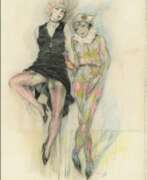

Edouard Chimot was a French Art Deco painter, illustrator and editor.
Edouard studied at the Ecole des Arts Décoratifs in Nice and then at the Ecole des Beaux-Arts in Lille. After the war, he was able to prove himself as an illustrator and master publisher. At the height of the Art Deco heyday, Chimot received a number of commissions to illustrate books with his original engravings, the first of which was the rare book Les Après-Midi de Montmartre with fourteen engravings by Chimot.
In 1920, Édouard Chimot founded his own publishing house, Éditions d'Art Édouard Chimot. Through this venture, he not only continued to create his own art, but also collaborated with other artists and writers to create high quality limited edition books, often with his distinctive illustrations. Édouard Chimot was associated with late Symbolist and decadent culture, and his own work is sometimes referred to as post-Symbolist. His collaborations with famous writers and poets, including Paul Verlaine and Charles Baudelaire, brought his illustrations to the forefront of the Art Nouveau movement.
With the collapse of the financial system in the early 1930s in Europe, the demand for luxury products also fell, but the artist continued to work, produce books and paint. Chimot's artistic style is characterized by sensuality and romanticism. He was an artist of the female figure, style, eroticism and embodied the essence of Art Deco imagery.


Henri Creuzevault was a French publisher, bookbinder and restorer.
In his youth he worked alongside his father, the bookbinder Louis Creuzevault. Together with him, Henri participated in an exhibition at the Musée Gallière in 1928 and received his first award, and in 1930 he became the owner of the workshop. In addition to bookbinding, he began publishing luxury books, commissioning illustrations from contemporary artists. Since then, he has been involved in both publishing and bookbinding at the same time.
At the 1937 International Exhibition, Henri Creuzevault won the First Prize for bookbinding. In 1946, he participated in the creation of the Original Bookbinding Society and took part in its exhibitions and in various book events in France and abroad. He also won a gold medal at the 1954 Milan Triennale. In 1937, the city authorities of Paris commissioned him to make bindings for gifts to the English princesses Elizabeth and Marguerite, as well as for the Golden Book of the Albert I Monument.
With his work, Henri Creuzevault created a new aesthetic concept oriented towards the freest expressions of the modern art of bookmaking.
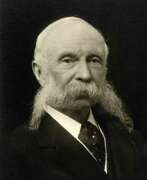

Sir James Crichton-Browne was a British and Scottish psychiatrist, neurologist, and MD.
James studied medicine at the University of Edinburgh, where his interest in psychiatry soon developed. After receiving his MD degree, he worked in hospitals in Derby, Devon and Newcastle. At the age of 26 he was appointed medical superintendent of the Lunatic Asylum in Wakefield and within nine years had transformed the hospital into a leading center for research and treatment.
Crichton-Browne initiated a scientific approach to the brain and its diseases. In 1871 he started the West Riding Asylum Medical Reports, which were published annually for six years. He was a pioneer in combating the common belief at the time that mental asylums could not produce original research and useful science. The persuasive scientist attracted many talented young people to collaborate in his research. Among them were David Ferrier (1843-1928) and Hughlings Jackson, who worked on cerebral localization and epilepsy. In 1878 they together founded what became the famous neurological journal Brain, the first journal devoted to what is now called neurobiology.
Crichton-Browne corresponded extensively with Charles Darwin, providing him with drawings and photographs for his book The Expression of Emotion in Man and Animals. Darwin valued his co-author so much that in 1883 he proposed that he be elected a Fellow of the Royal Society.
Crichton-Browne was also active in the development of public health policy regarding mental health. He worked prolifically into old age, writing monographs and autobiographical material, but in recent years he became involved in the controversial science of eugenics.


William Curtis was a British botanist and entomologist, editor of the oldest botanical publication in Great Britain.
Curtis became interested in natural history in his youth, and at the age of 25 had already published "Instructions for the Collection and Preservation of Insects", particularly butterflies. In 1779 he founded his own London botanical garden at Lambeth and published Flora Londinensis (1777-1798), a 6-volume work on urban nature.
In 1787 Curtis began publishing the later popular Botanical Magazine, which also featured hand-colored plates by artists. This magazine has changed its name several times over time, but is still continued by the Royal Botanic Gardens, Kew, as a publication for those interested in horticulture, ecology or botanical illustration. Interestingly, the magazine was entirely hand-colored until 1948.


Francesco de Bourcard was a Swiss-born Italian scholar, historian and publisher.
De Bourcard devoted about twenty years, from 1847 to 1866, to the production of a voluminous work, The Uses and Customs of Naples, to which he engaged a large number of contributors, both writers, artists, and engravers.
The first of the two volumes was published in 1853. The books depict the customs of the time, the typical characters of the people, their daily lives, and a wide range of popular and religious festivals. Hundreds of lithographs are accompanied by explanatory texts.


ohann Theodor de Bry (also Johann Dietrich de Bry) was a German publisher, engraver and draughtsman from the Calvinist de Bry family of artists.
Johann was the eldest son and apprentice of the Flemish painter and goldsmith Theodor de Bry (1528-1598). In 1598, Johann Theodor took over the family print shop and moved the business from Frankfurt to Oppenheim. In addition to many of his own works, he greatly added to the collection of "Portraits of Eminent Figures" begun by his father. De Bry specialized in richly illustrated scientific books.


Adam Friedel or Adam Friedel von Friedelsburg was a Danish soldier and pirate, painter and actor.
Having the character of an adventurer, Friedel became a participant in the War of Liberation in Greece 1821-1829. He was granted the title of Baron Friedel von Friedelsburg, but the information about his aristocratic origin was found to be false and he was expelled from the Greek army. He was eventually forced to leave Greece for London, where his talents as an actor, musician, and painter became apparent.
In London, Adam Friedel opened his own lithographic studio. He became best known for his portraits of the heroes and leaders of the Greek Revolution, first produced between 1824 and 1826. The series of 24 portraits sold in large editions throughout Europe. He also created several famous portraits of Lord Byron.
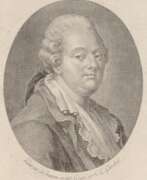

Jean-Benjamin de La Borde was a French composer, music historian, publisher and financier.
De La Borde played the violin and trained in composition. In 1748 he composed his first small opera, and in 1751 his opera Le Rossignol ou Le Mariage secret (The Nightingale or The Secret Marriage) was staged in Paris. The prolific composer went on to compose an average of 30 operas a year for 30 years, mostly of a comic nature.
De La Borde was also a prominent cultural figure of his time: he authored Essays on Music, a four-volume collection of songs for solo voice, and initiated the publication of the General and Private Description of France (1781-96).
For several years de La Borde was valet and favorite of Louis XV; he refused to leave France during the Revolution and was arrested and executed by guillotine on July 22, 1794.


Littret de Montigny, full name Claude-Antoine Littret de Montigny, was a French painter, engraver, and publisher.
Among de Montigny's other works, his album in which he depicted a variety of uniforms and flags of the French army under Louis XV, accompanied by a brief description, stands out, providing a unique insight into the French army of the time.


Joseph Dennie was an American writer, journalist, and major literary figure of the early 19th century.
Dennie graduated from Harvard College, became a lawyer, but became active in writing. In 1801, he founded a periodical called The Port Folio, which became the most prominent literary weekly of its time in America. It was also the first important political and literary journal in the United States.
As founder of the Tuesday Club, Dennie was the center of Philadelphia's aristocratic literary circle in the early 19th century and for a time was the leading literary critic in the country. He ridiculed the simplistic and crude nature of Native Americans and opposed democratic innovations. He also encouraged talented young writers.


Pierre Duflos the Younger was a French painter, engraver and publisher.
Duflos was a renowned copper engraver and created works based on paintings by popular artists of his time. Of special note is a large work entitled "A Collection of Engravings representing the Degrees, Ranks, and Dignities, corresponding to the Costumes of all existing Nations; with Historical Explanations and Abridged Lives of Great Men, which illustrated the Dignities with which they were adorned," published in Paris in 1780. It is a veritable encyclopedia of the costume of many cultures of the world. It depicts real people such as Confucius, Montezuma, Mohammed II, Ahmet IV, Cortes, Jacques-Auguste de Thou, Thomas More, Marie Antoinette, as well as types from Africa, Asia, the Americas and Europe, including indigenous peoples. Pierre Duflos created it in collaboration with Marie-Elisabeth Thibault and Clément-Pierre Marillier.


Martin Engelbrecht was a German Baroque painter and engraver, publisher, and inventor of the first miniature dioramas.
Martin and his brother Christian were skilled printers and engravers in Augsburg, Germany in the 18th century. Martin's works include illustrations for Ovid's Metamorphoses, The War of the Spanish Succession, P. Dekker's Les Architectes Princiers, 92 views of Venice, and the Assemblage Nouveau Des Manouvries Habilles, a series of engravings depicting laborers and their clothing, published in Augsburg around 1730.
Also around 1730. Martin Engelbrecht created maps for miniature theaters, which, inserted into a display box, showed religious scenes and pictures of everyday life in three-dimensional perspective. He devoted an entire series to Italian theater. These miniature theaters or Engelbrecht dioramas are considered the earliest paper theaters in history, and they became very popular in the 18th century as a means of home entertainment. Engelbrecht is known to have created at least forty-one sets of miniature theater dioramas.


Giuseppe Franco, an Italian painter active between 1565 and 1628, remains an enigmatic figure in the rich tapestry of art history. Known by various names, including Giuseppe Franchi, Giuseppe Monti, and Giuseppe dalle Lodole, his diverse monikers reflect the multifaceted nature of his work and the period's artistic fluidity.
Rooted in the transition from the Renaissance to the Baroque, Franco's artistry is characterized by its dynamic compositions and emotional intensity. While specific details of his oeuvre are less documented, his known works suggest a mastery of form and color, embodying the evolving styles of his time. Franco's paintings, presumably found in Italian churches and private collections, would offer a glimpse into the religious and cultural narratives prevalent during his lifetime.
Franco's contributions to art and culture are significant for their historical context and the light they shed on the period's aesthetic developments. His style, indicative of the early Baroque's emerging vibrancy, would have played a role in the transition from the classical harmony of the Renaissance to the expressive drama of the Baroque.
For collectors and experts in art and antiques, Giuseppe Franco's works represent a fascinating puzzle piece of history, bridging gaps between known artistic milestones. His paintings, if extant, would be prized not only for their beauty but also for their historical value, offering insights into the era's shifting paradigms.
To explore the mystery and beauty of Giuseppe Franco's art and to stay informed about potential discoveries, sales, and auction events related to his work, signing up for updates is recommended. This subscription ensures direct access to the latest information, catering specifically to enthusiasts of historic art and antiques.


Philip Morin Freneau was an American publicist, editor, and known as the "poet of the American Revolution".
After graduating from Princeton University, Freneau taught school and studied to become a minister. With the outbreak of the American Revolution, he began writing scathing satire on the British and the Tories. During a two-year voyage to the Caribbean islands, he created the poems "The Beauties of Santa Cruz" and "The House of Night," and in 1778 he became involved in the war. After his release from British captivity, Freneau wrote a book in verse, "The British Prison Ship" (1781).
After serving as a sea captain for several years, Freneau took up journalism. In his National Gazette newspaper in Philadelphia, he sharply criticized George Washington.
Freneau's poetry, which accompanied him throughout his life, covers a variety of subjects, including political situations, American Indians, nature, the sea, and naval battles. His political poems are often satirical, but his nature poems are very lyrical.


Pierre Giffart was a French painter, printmaker and engraver.
He was a royal engraver and created lithographic works on a variety of subjects. One of Giffart's famous works are plates from original Chinese works brought from China by the envoy of King Louis XIV of France, Joachim Bouvet, depicting graceful Chinese figures in traditional and ceremonial dress. The first French edition of Beauvais's The Historical Portrait of the Emperor of China, with illustrations by Pierre Giffart, was published in Paris in 1697, and was subsequently translated and published in other languages.


Johann Jakob Haid, a prominent German engraver and portraitist, was renowned for his work in Augsburg during the 18th century. Born into a family of artists, Haid's legacy is particularly noted for his exquisite mezzotint portraits. His career also involved a stint in England, where he was influenced by the works of English mezzotint engraver Robert Robinson.
Haid's artistic prowess was not limited to portraiture. He ventured into botanical illustration, contributing significantly to Johann Wilhelm Weinmann's "Phytanthoza iconographia". This collaboration showcases his versatility and technical skill in different art forms.
Collectors and experts in art and antiques often seek Haid's works for their unique artistic value and historical significance. His contributions to the art world, especially in mezzotint engraving, continue to be appreciated and studied. His works are a testament to the rich cultural and artistic heritage of Germany.
For those interested in the world of art and antiques, particularly in the realm of engraving and painting, Johann Jakob Haid remains a figure of significance. To stay updated on new product sales and auction events related to Johann Jakob Haid, sign up for our updates. This subscription is an excellent way to stay informed about the latest developments and opportunities in the field.


Sarah Josepha Buell Hale, born Sarah Josepha Buell, was an American writer, magazine editor, and civic activist.
Sarah Buell received a good home education and married David Hale in 1813, but, finding herself in financial difficulty after her husband's death, she turned to literary work in the 1820s. Her poems were published in local journals and in the collection The Genius of Oblivion (1823). Sarah also wrote several novels during her lifetime.
In 1828, she became editor of the new Boston edition of Ladies' Magazine (from 1834, American Ladies' Magazine). Hale herself wrote much of the wide variety of material for each issue-literary criticism, essays on American life, essays, and poetry, and she supported patriotic and humanitarian organizations, notably the Boston Ladies' Peace Society and the Sailors' Aid Society, which she founded in 1833. She was a lifelong advocate of women's education. During this period she also published Poems for Our Children (1830), containing her most famous work, Mary Had a Little Lamb.
In 1837, in Philadelphia, Hale became editor of Lady's Book, soon to be known as Godey's Lady's Book. During her years as editor, this publication became the most influential and circulating women's magazine published in the country at the time. Hale encouraged American writers: Edgar Allan Poe, Nathaniel Hawthorne, Ralph Waldo Emerson, Harriet Beecher Stowe, and other women writers published in the magazine.
Hale's major accomplishment was Woman's Record; or, Sketches of Distinguished Women, published in 1853, 1869, and 1876. For this project, she produced some 36 volumes describing biographies of women, emphasizing their influence in history on social organization and literature.
Sarah Hale is considered one of the main organizers of the Thanksgiving holiday, and she helped shape the worldview of women of her time.


Edward Everett Hale was an American clergyman, preacher and writer, abolitionist and pacifist.
Hale demonstrated outstanding literary ability from an early age. He went to Harvard College and became a minister and preacher. Grandnephew of Revolutionary hero Nathan Hale and nephew of orator Edward Everett, Hale worked for his father's newspaper, the Boston Daily Advertiser. And for 70 years he never stopped writing newspaper articles, historical essays, short stories, pamphlets, and sermons for the North American Review, The Atlantic Monthly, and the Christian Examiner. From 1870 to 1875 he published and edited the Unitarian magazine Old and New.
Hale wrote several novels, of which the most popular were East and West (1892) and In His Name (1873). Hale's most famous novel, A Man Without a Country, first published in The Atlantic Monthly in 1863, was written to evoke patriotism during the Civil War. It is a political fable about a man who renounces his American citizenship and greatly regrets it.
Many of Hale's 150 books and pamphlets were tracts in support of the ideas of Negro education, worker's housing, and world peace. The moralistic novel Ten Times One is Ten (1871) was the impetus for the organization of several youth groups.
In 1847, Hale was elected a member of the American Antiquarian Society and remained a member for the rest of his life. A 10-volume collection of Edward Hale's writings was published between 1898 and 1900. In 1903 he was appointed chaplain of the United States Senate and joined the Literary Society of Washington. The following year he was elected a member of the Academy of Arts and Sciences.


Nicolaus Heideloff, full name Nikolaus Innocentius Wilhelm Clemens van Heideloff, was a German painter and copperplate engraver and publisher.
Heideloff came from a respected family in Germany that included prominent painters and sculptors. He studied and worked in Paris, but had to flee to London during the French Revolution, where he spent 30 years of his life. Here he worked as a publisher for the most luxurious fashion magazine of the time, The Fashion Gallery, which published elaborate color copperplate prints, aquatints, and etchings. Heideloff drew many outfits for the publication for all occasions of high society.
Nikolaus Heideloff also depicted historical scenes, battles, the British navy, and caricatures for Rudolf Ackermann while he was working in London until 1814, often as hand-colored etchings.
In 1815, William I, King of the Netherlands, appointed him director of an art gallery in The Hague.


John Camden Hotten was a British publisher, writer, linguist and bibliophile.
By mid-1855, Hotten had opened a small bookstore in London and then established his own publishing business, which after his death became Chatto & Windus. Hotten's publishing house published many works by classic and contemporary writers. After spending about six years in America, he was the first to introduce a number of American writers to the British public, including James Russell Lowell, Oliver Wendell Holmes, and Bret Harte.
Hotten compiled The Dictionary of Modern Slang, Slang, and Vulgar Words, first published in 1859 and reprinted many times thereafter. His other major work is A Handbook of Topography and Family History of England and Wales (1863). Hotten also wrote and edited literary and biographical material in various periodicals.
Hotten was a collector, author, and secret publisher of erotic works, which were illustrated, among others, by the famous caricaturist Thomas Rowlandson (1757-1827).


Johann Baptist Isenring was a Swiss landscape painter and printmaker, one of the first photographers in 19th-century Switzerland.
Johann studied painting and aquatint at the Munich Academy of Fine Arts, opened an art studio in St. Gallen in 1828 and soon began publishing his lithographic collection of picturesque views of Switzerland's most remarkable cities and towns.
In 1839, Isenring, fascinated by the discoveries of Niépce and Daguerre, bought equipment for "daguerreotype" and a year later organized an exhibition in his studio in Multtertor, which was probably the first photographic exhibition in the world. Isenring even gave up painting for a while and worked as a photographer for two years, settling in Munich. He made portraits, photographs of architecture, reproductions of paintings and developed a coloring method for his prints, which he patented in America.


Bernhard Jäger, born on June 17, 1935, in Munich, Germany, is a multifaceted artist known for his work as a painter, printmaker, and sculptor. Initially pursuing biology between 1956 and 1957, Jäger later shifted to art studies at the Werkkunstschule Offenbach, graduating in 1961. His background in biology notably influenced his artistic career, adding a unique depth and perspective to his creations.
Jäger co-founded the Gulliver-Presse with fellow lithographer Thomas Bayrle, and during this time, he also embarked on a secondary career as a publisher until 1966. His contributions to the world of book art are significant, with some of his illustrated books being awarded the prize "Die schönsten Bücher des Jahres" by the Stiftung Buchkunst in 1970, 1984, and 1994. He is also known for designing thirty book covers for Jorge Luis Borges' "The Library of Babel" published by the Gutenberg Book Guild in 2007.
Besides his contributions to book art, Jäger has held positions as a guest lecturer and head of the evening school at Städelschule in Frankfurt am Main. He also served as a visiting professor at the Hamburg University of Applied Sciences. His work has been featured in numerous solo and group exhibitions, including the Stedelijk Museum, Amsterdam, and the San Francisco Museum of Modern Art.
Bernhard Jäger is a member of the Darmstadt Secession and a recipient of the Prize of the Heitland Foundation in 1998. His works are included in public collections such as the Museum of Fine Arts, Boston, and the Klingspor Museum, Offenbach.
For collectors, auctioneers, and experts in art and antiques, Bernhard Jäger's work offers a rich blend of artistic styles influenced by his diverse background. His works, especially his lithographs known as "X-ray graphics," are sought after in the art market.
To stay informed about sales and auctions related to Bernhard Jäger's art, signing up for updates is recommended. This subscription will provide timely information about new product sales and auction events related to his art.
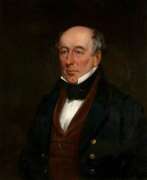

William Jardine was a Scottish naturalist, ornithologist, ichthyologist, artist and publisher of works on zoology.
Jardine studied medicine at the University of Edinburgh and was an excellent sportsman. Although his main passion was ornithology, he also studied ichthyology, botany and geology. Sir William Jardine was a prominent Scottish Victorian naturalist, author and publisher of 40 volumes of the popular Naturalist's Library (1833-43). Of these, 14 volumes were devoted to ornithology, 13 volumes to mammals, 7 volumes to entomology, and 6 volumes to ichthyology.
A series in four volumes, Illustrations on Ornithology, co-written with Prideaux John Selby, was published between 1825 and 1843. His book on burrows and fossil tracks, The Ichnology of Annandale, includes fossils from his ancestral estate. Jardine was a leading expert on salmon and trout in the British Isles. His outstanding knowledge of the species was profound that in 1860 he was appointed a member of the Royal Commission on the Salmon Fisheries of England and Wales. His research culminated in the best and most comprehensive monograph on these fish, "British Salmonids," with the remarkable illustrations by Jardine himself. William Jardine's private natural history museum and library are considered the finest in Britain.
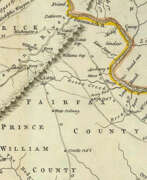

Thomas Jefferys was an 18th-century British cartographer and geographer, engraver and publisher.
As the best in the business of map-making, Jefferys held the honorary title of "King George III's geographer". He is known for his detailed and large-scale maps of the districts and counties of Great Britain as well as North America, particularly Virginia (1776). He was the leading map supplier of his day, engraving and printing maps for government and other official bodies.


Paul Jerrard was a British artist, illustrator, cartographer and publisher.
His publishing house, Jerrard & Son, Paul & Son, produced Shakespearean paintings, ornithological, entomological and botanical publications, species, sheet music, gift books, almanacs etc.


Theophilus Johnson was a British artist, amateur naturalist and publisher.
He trained as a clerical worker and then started his own printing business. Johnson had a passion for the natural sciences and spent much time in the gardens of the Zoological Society of London. His drawings and books cover a wide range of topics, from molluscs to mammals, but his main interest was entomology.
Theophilus Johnson's publications on entomology depict the various species of moths found in the British Isles on beautifully colored watercolor sheets, and include illustrations of their larvae as well as the plants they feed on. During his lifetime he illustrated more than 46 volumes with original watercolors.
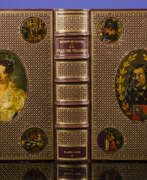

René Kieffer was a French bookbinder, publisher and bookseller.
A pupil of Henri Marius Michel, he worked for ten years as a gilder at the Chambolle-Douroux bookbinding factory. In 1903 René Kieffer opened his studio in Paris, and in the same year his work was first shown at the Salon de la Société des Artistes-Decorators.
Over time, his work shifted from classical forms to Art Nouveau motifs. René Kieffer was known for using bright colors in elaborate designs, creating luxurious bindings for unique publications. Between 1917 and 1923, he created Pierre Legrain's designs for Jacques Doucet's library. As a bookbinder and publisher, René Kieffer was vice-president of the book department of the 1925 Paris International Exhibition of Decorative Arts and Modern Industry. He also participated in the International Exhibition of Arts and Technology in Modern Life in Paris in 1937.


Klaus Kinold is a German architectural photographer.
Klaus Kinold studied architecture at the Technical University of Karlsruhe with Egon Eiermann, and then decided not to build but to show architecture. He opened an architectural photography studio in Munich and studied panoramic photography. For more than 25 years, Kinold was editor and illustrator of the Swiss professional publication KS Neues, which featured silicate brick buildings, and lectured on photography at the State Academy of Fine Arts in Stuttgart.
In 1983, Klaus Kinold had his first solo exhibition at the Rudolf Kieken Gallery in Cologne, followed by many other prestigious shows. From 2019 to August 2020, the DKM Museum in Duisburg designed the exhibition "Architecture through the eyes of a photographer", featuring the work of architects Carlo Scarpa, Rudolf Schwarz and Hans Döllgast.
Kinold documented almost all of the famous architects' projects. It was important to the photographer that his preferably black and white photographs were clear, objective, rational and factual in their presentation.


Christian Friedrich Carl Kleemann was a German artist, entomologist, and publisher.
He is known for his work on the continuation of the voluminous work on entomology by August Johann Rösel (1740-1761). Due to ill health, Rösel was unable to complete his series, so his work was continued by his son-in-law Christian Friedrich Karl Kleemann with the help of his daughter Katharina Barbara Kleemann. The second edition as well as the 6th part of this work did not appear until after Kleemann's death under the direction of Christian Schwarz. Most of the descriptions are devoted to butterflies, but other invertebrates, such as crabs, spiders, mollusks, and polyps, are depicted in addition to insects.


August Köllner (German: Augustus Koellner or Köllner), full name Augustus Theorore Frederick Adam Kollner, was a German and American painter and illustrator, engraver, and publisher.
August Köllner studied painting and lithography in Frankfurt, moved from Germany to the United States, and settled in Philadelphia in 1839. He soon took a job with Huddy and Duvall's U.S. Military Journal. In the 1840s he worked on a series of watercolors, fifty-four of which were published in 1848-51 by the Paris firm of Goupil, Vibert & Co. under the title Views of American Cities.
August Köllner worked on book illustrations, designed various merchandise, and worked for other lithographic firms in Philadelphia until he went into business for himself as a printer and lithographer. He exhibited his drawings at the Pennsylvania Academy of the Fine Arts in Philadelphia in 1865 and 1868.


Jan Kops is a Dutch agronomist, botanist and publisher of thematic journals.
In his youth, Kops was interested in botany, but had to study to become a priest. He soon became disillusioned with a career as a preacher and took up his favorite occupation. The fruit of his botanical research was the first volume of the Flora of Batavia, published in 1800. He was engaged in the task of converting the dunes into agricultural land.
Kops great importance to the country's agriculture lies mainly in his work as the first Dutch agricultural official. He possessed great efficiency and great perseverance. On Kops's initiative, the first Dutch agricultural journal, Magazijn van Vaderlandschen Landbouw, appeared between 1803 and 1814, which he himself edited.


Gustav Kraus, also known as Gustav Friedrich or Gustav Wilhelm, was a Bavarian painter and lithographer.
He studied at the Munich Academy of Fine Arts and was admitted as a member of the Munich Art Society, and is considered a representative of the Biedermeier. In 1836 he founded his own lithographic publishing house. In his landscape works, Kraus combined topographical precision with artistic quality.
His urban and architectural vedute, depictions of historical events, including maneuvers, parades, processions, inauguration ceremonies, portraits of noble contemporaries, sketches of costumes and uniforms were published by many publishing houses. One of the most valuable of Kraus's works today is the depiction of the Oktoberfest procession of 1835 with 24 colorful lithographs.


Karl Otto Lagerfeld is a German fashion designer, designer, photographer, collector and publisher.
Karl found himself in the fashion world by chance, as he planned to work as an illustrator. At the age of 21, he entered the 1954 International Woolmark Prize and won first place for his sketch of a coat, which launched his career. For the next 65 years, fashion remained the foundation of his work, although he spent his life actively expressing himself in other areas of art.
In 1987, Karl shot his first advertising campaign and developed a passion for photography. In 1999, he opened his own photography studio in Paris, where he has taken countless images of the world's greatest figures in art and fashion. Many of Carl's photographs have also been used in art books. Karl was also a master of self-portraits: throughout his life he photographed and painted his iconic image.
A passionate bibliophile (his personal library numbered 300,000 volumes), Lagerfeld merged his photography studio with the 7L bookstore and later opened EDITIONS 7L, a publishing house specializing in books on design and photography. He was also involved in various interior design and architecture projects.
In 1965 Lagerfeld took over the Italian fashion house Fendi, where he created collections of leather and fur garments, and in 1983 he became the artistic director of the French house Chanel - with these companies he had lifetime contracts. In 1984, Lagerfeld founded his own fashion house, Karl Lagerfeld Impression.


Evert Maaskamp was a Dutch artist and engraver, publisher and print dealer.
In addition to publishing geographical publications, topographical maps and engravings, Maaskamp produced very high quality illustrated works on sheet metal. Throughout his career he collaborated with the English artist Charles Howard Hodges, whose influence is evident in many of Maaskamp's engravings.


Matthäus Merian the Elder was a Swiss engraver and draftsman, renowned for his detailed and intricate works during the Baroque era. Born in Basel in 1593, he made significant contributions to art, particularly through his engravings and illustrations. Merian's artistic journey led him to Frankfurt am Main, where he produced a plethora of engravings depicting various subjects, including battles, hunts, and topographic views of European towns.
One of his notable contributions is his work on "Theatrum Europaeum," a series that chronicled contemporary history. Merian's legacy continued through his family, with his children, particularly Matthäus Merian Jr. and Caspar, taking over his publishing house after his death in 1650. They preserved and extended their father's artistic heritage, continuing to publish significant works like the "Topographia Germaniae."
Matthäus Merian the Elder's artistry was not confined to historical and topographical subjects; he also excelled in creating alchemical illustrations, demonstrating his versatility and depth as an artist. His works, such as those found in the "Musaeum Hermeticum" and "Atalanta Fugiens," display the finesse and detail that characterize his style. Today, Merian's works are preserved in various museums and collections, offering a window into the artistic and cultural milieu of the 17th century.
For collectors and experts in art and antiques, Merian's works represent a significant chapter in the history of engraving and illustration, reflecting the rich cultural and historical narratives of his time. If you are keen on exploring more about Matthäus Merian the Elder's contributions to art and history, consider signing up for updates on sales and auction events related to his works.


Georgius Merula, also Giorgio Merlani di Negro or Georgius Merula Alexandrinus, was an Italian humanist scholar, philosopher, philologist and historian of the Renaissance.
He held the position of professor and taught in Milan and Venice. But became known for being the first to print the works of Plautus (1472), Scriptores rei rusticae, Cato, Varron, Columella, and Palladius (1472). He also published commentaries on parts of Cicero (especially De finibus), Ausonius, Juvenal, Curtius Rufus, and other classical authors. Merula also labored in historical research and described several significant battles.
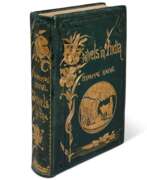

Ardaseer Framjee Moos was a 19th-century Indian politician.
Ardaseer Framjee Moos was educated and later taught at Elphinstone Institute, and was the secretary of the Bombay Native Common Library from 1860 for more than two decades. An active participant in Parsi reform movements and Mumbai political life, he became treasurer of the Bombay Association in 1876. Moos prepared and published A Journal of Travels in India (1871), the illustrations in which are various views of the principal buildings of Lucknow, Agra, Dehli, and Calcutta. He also published dictionaries of English and Gujarati.
















































































